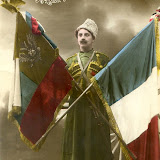Not every problem that someone has with his girlfriend is necessarily due to the capitalist mode of production.”
Herbert Marcuse
In the 1980s you could buy t-shirts with the phrase “All art is political” across the front. At first hearing it sounded irrefutable, even, you could say, virtuous. After all, if you weren’t prepared to stick your neck out for something you believed in, what were you doing calling yourself an artist? With a little more thought however the statement quickly turned trite and vacuous. Firstly, if you were going to make any statement about the world and your place in it, it was by the contemporary definition political. Even if you chose to withdraw completely and create work based on the minutiae of your personal life, that could be construed as political. Inevitably, artists quickly learned to dress their work in politics and that wasn’t so hard. An ordinary, thoughtless installation could become a metaphor for political conflict and who was the viewer to criticize the artist’s intentions when a pile of bricks in the corner represented the threat of nuclear war or the divide between the sexes? (Sexual politics is a so much better term than ‘gender politics’; it suggests the issues are physical and emotional rather than clinically theoretical.) We don’t hear that all art is political so much anymore, partly because behind the maxim lurked too much bad art but mostly because politics is everywhere. All art is political and it pretty much has been since it left the caves.
Every news photograph, every image in a social documentary, every identity card portrait is political and if a photograph wasn’t originally taken intended as a political statement it could easily be given one. But what about photography that is about politics; photographs about ideology, the things people are prepared to die for? Anyone can read the political message in Boris Ignatovich’s portrait of the Kazakh soldier at the top: The glorious Soviet state is young, vigorous and looking upwards. For another view of politics consider the postcard at the top of this paragraph and the one immediately below: same woman, same photographer, same outfit, only difference being the flags, one American, one Dutch. Perhaps the studio produced dozens of these postcards, each with a different flag, and the last thing on the photographer’s mind was a particular nationalism. What we get however is the cynical malaise in every voter’s heart: “It doesn’t matter whom you vote for; they’re all the same.”
And here is a more deliberate statement; a group of Nazi officers eating dinner under a portrait of Hitler. There is really no doubt that the photographer composed the photograph with the intention of having the leader’s portrait as the centre of attention. There is a small question as to whether that was done out of love or fear. The sense is that it was the former though that could have been motivated by fear. The portrait changes the whole dynamic of the image. No one can seriously think this is merely a scene of a group of men sitting down to a meal for it tells us everything we need to know. They are complicit.
Compare that to these two photographs taken by an English couple in Berlin for the 1936 Olympics. What were they thinking when they posed under the swastikas? By 1936 Hitler had made it clear he intended to invade Czechoslovakia and Poland and concentration camps were being set up. Jewish athletes were forbidden to compete for Germany, several countries had already boycotted the games and there was an international debate about how closely the Olympic salute resembled the Nazi salute. It’s a fair bet that “I’m only here for the sport” was heard a lot in Berlin that summer but no visitor could claim ignorance about what was going on in Germany. That doesn’t mean they either were supporters or that they felt the need to be sensitive to the situation. We have a natural attraction to sinister icons and you can also bet that they weren’t the only English visitors snapping away at Nazi symbols during the day, shaking their heads in pious disbelief over a few beers in the evening.
For another comparison we have two snapshots of Turkish politicians. There aren’t a lot of clues to tell us what their convictions were but then, when we are talking about politics ideology isn’t always important. What we can see is that the man with the top hat appears well versed in the theatrics of politics. The hat itself suggests a man who believes power is his by birthright. That upright finger is intended to persuade rather than admonish his listeners. Consider then the man we shall call his opponent. Surrounded by flags and people, he offers a grimmer, more pragmatic vision of the world. His rhetoric might have been full of paranoid allusions to dark forces but his audience understood what he was talking about. If we continue to imagine that these two were pitted against one another, the contest is between one who offers what people want to believe and the other who gives them what they suspect is the truth.
The gallery includes one propaganda postcard from France, because propaganda is about politics, and a couple of snapshots of crowds attending a speech by Kemal Ataturk. It doesn’t include portraits of political leaders because it is only by identifying them the portrait becomes political. Nor does it include war, surveillance, bureaucratic, protest or several other forms of photography that are deliberately political in intent. When everything is political you have to draw the line somewhere.
VIEW THE GALLERY HERE
 |
| POLITICS |








No comments:
Post a Comment
Add comments here